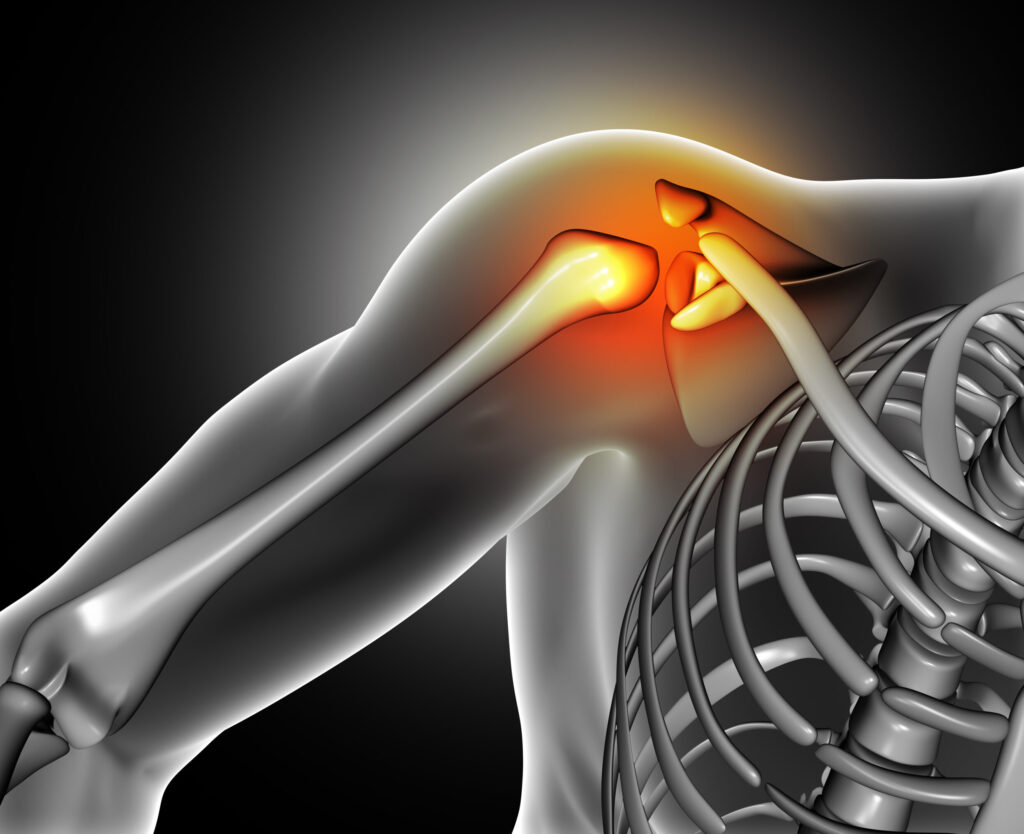SHOULDER


Shoulder Care That Brings You Back to Life
We utilize advanced techniques and state-of-the-art technology to ensure effective results, helping you regain mobility and alleviate pain.
Trust us for all your shoulder surgery needs and take the first step towards a healthier, more active life.
All types of Shoulder Services
As an expert in shoulder health, we specialize in diagnosing, treating, and rehabilitating shoulder injuries and conditions, ensuring you live pain-free and active. Our comprehensive care approach is designed for individuals of all ages and activity levels, from athletes to everyday movers. Whether it's a chronic issue or a sports-related injury, we provide precision shoulder solutions tailored to your needs.
1. Rotator Cuff Tears
Also Known as: shoulder muscle tear , tendon tear
Rotator Cuff FAQ
- Pain: Felt with shoulder movement, radiating down the arm, and commonly worsening at night.
- Weakness: Difficulty lifting or rotating the arm.
- Limited Range of Motion: Loss of normal shoulder function.
- Degenerative Tears: Occur gradually with age and may not always require surgery.
- Traumatic Tears: Result from injury and typically need surgical intervention.
- A fall or wrenching injury with shoulder pain, especially if you are over 40.
- Persistent pain and weakness lasting more than 3 weeks.
- Imaging (ultrasound or MRI) confirms a tear.
- Trauma: A fall, lifting heavy objects, or sudden movements.
- Overuse: Repetitive overhead activities, especially after periods of inactivity.
- Age-Related Degeneration: Poor blood supply to the tendons reduces their ability to heal over time.
- Impingement Syndrome: The tendons get pinched under the acromion, causing wear and eventual tearing.
- Clinical Evaluation: A physical examination of shoulder movement and strength.
- Imaging Tests:
- Ultrasound: A dynamic and cost-effective option often available in-clinic, providing immediate results. Also for patients who are claustrophobic.
- MRI: Provides detailed images of the muscles and tendons and helps in surgical planning.
- Avoid repetitive or excessive overhead activities.
- Perform regular exercises to strengthen and maintain shoulder flexibility.
- Listen to your body—don’t ignore pain.
- Pain Medications: Over-the-counter or prescription options to reduce pain and inflammation.
- Physiotherapy: Exercises to strengthen the shoulder and improve flexibility.
- Cortisone Injections: Reduces inflammation and pain, mainly for partial tears but should be used cautiously in tendon tears to avoid further weakening.
- The tear results from a traumatic injury.
- Pain and weakness persist despite non-surgical treatments.
- Arthroscopy (keyhole): A minimally invasive approach with small incisions.
- Open Surgery: For complex or large tears.
2. SLAP Tear
Superior Labrum Anterior to Posterior tear
SLAP Tear FAQ
- Pain: Especially with overhead movements like throwing or reaching.
- Clicking, Popping, or Grinding Sounds: When moving your arm.
- Weakness: Your shoulder may feel unstable or like it’s “slipping.”
- Reduced Range of Motion: Difficulty performing tasks like lifting, reaching, or carrying objects.
- Night Pain: Discomfort while lying on the injured shoulder.
- Sudden Injury (Trauma):
- Falling on an outstretched arm.
- Lifting something heavy with a sudden jerking motion.
- Shoulder dislocation.
- Repetitive Overhead Movements:
- Sports like baseball, tennis, volleyball, or swimming.
- Overhead lifting at the gym.
- Aging and Degeneration:
- Over time, the labrum weakens and becomes prone to tears.
- Common in people over 40 years old.
- MRI: Helps visualize the labrum and confirm the tear.
- X-rays: To rule out other bone-related issues.
- Type I: Minor fraying of the labrum; common with aging.
- Type II: Detachment of the labrum from the bone (most common).
- Type III: A bucket-handle tear where part of the labrum is torn and flips into the joint.
- Type IV: Involves the labrum and the nearby biceps tendon.
- Physical Therapy: Focuses on strengthening the shoulder muscles.
- Medications: Anti-inflammatory drugs (like ibuprofen) to reduce pain and swelling.
- Activity Modification: Avoid activities that worsen symptoms.
- Injections: Corticosteroid injections for temporary relief.
- Arthroscopic Surgery: Minimally invasive surgery using small incisions to repair the tear.
- Strengthen your shoulders with regular exercises.
- Avoid overuse and take breaks during repetitive activities.
- Use proper technique when lifting or playing sports.
- Warm up and stretch before physical activity.
- Can a SLAP tear heal on its own? Minor tears may improve with rest and therapy. Severe tears often require surgery for full recovery.
- Will I need surgery? Not always! Many people improve with physical therapy. Surgery is recommended if symptoms persist.
- Can I return to sports after a SLAP tear? Yes! With proper treatment and rehabilitation, most people return to their activities.
- How painful is the recovery? Pain is manageable with medication and therapy.
- Can I prevent SLAP tears? Strengthening your shoulders and avoiding overuse can lower your risk.
3. Shoulder Instability
Shoulder dislocation , shoulder popping out
Shoulder Instability FAQ
- Anteriorly (front) – most common.
- Posteriorly (back).
- Inferiorly (bottom).
- Caused by a high-impact injury (e.g., sports tackles, car accidents).
- Often results in a Bankart lesion (tearing of the labrum from the glenoid bone).
- Treatment: Initial management with a sling and physiotherapy. Surgery, such as Anterior Stabilization, may be needed for recurring instability.
- Occurs with minimal force (e.g., reaching overhead, turning in bed).
- Often linked to joint laxity (loose joints) or muscle imbalances.
- Treatment: Physiotherapy to improve muscle control and posture. Surgery may be considered if physiotherapy is not effective.
- Shoulders dislocate easily, often as a result of abnormal muscle patterning.
- Commonly painless and may occur in both shoulders.
- Treatment: Physiotherapy to retrain muscle coordination. In rare cases, surgery such as capsular tightening may be required.
- Bankart Lesion: Tearing of the labrum.
- Hill-Sachs Lesion: Dent in the humeral head caused by dislocation.
- ALPSA Lesion: Displaced labrum tear.
- HAGL Tear: Ligament tear from the humerus.
- SLAP Tear: Tear at the top of the labrum.
- Strengthens shoulder muscles to restore joint stability.
- Focuses on posture, muscle coordination, and balance to prevent further dislocations.
- Arthroscopic Bankart Repair: Keyhole surgery to reattach the torn labrum and repair ligaments. Suitable for cases without significant damage to the glenoid bone.
- Latarjet Procedure: Transfers a piece of bone from the shoulder blade (coracoid) to the damaged area of the glenoid, providing additional support and stability.
- Often used for recurrent dislocations with more than 20-25% bone loss.
- Remplissage Procedure: Fills the defect in the humeral head by attaching part of the rotator cuff into the defect, preventing it from engaging with the glenoid rim.
- Open Capsular Repair: Reinforces the shoulder capsule and ligaments through open surgery.
- Bone Graft Reconstruction: In cases of extreme bone loss, grafts may be used to rebuild the glenoid or humeral head.
- Strengthen Shoulder Muscles: Focus on balanced training, not just “mirror muscles” (those visible in the front).
- Improve Core Stability: Helps with overall posture and shoulder control.
- Warm Up: Always warm up before activities to reduce injury risk.
- Avoid High-Impact Sports: Especially if prone to instability.


